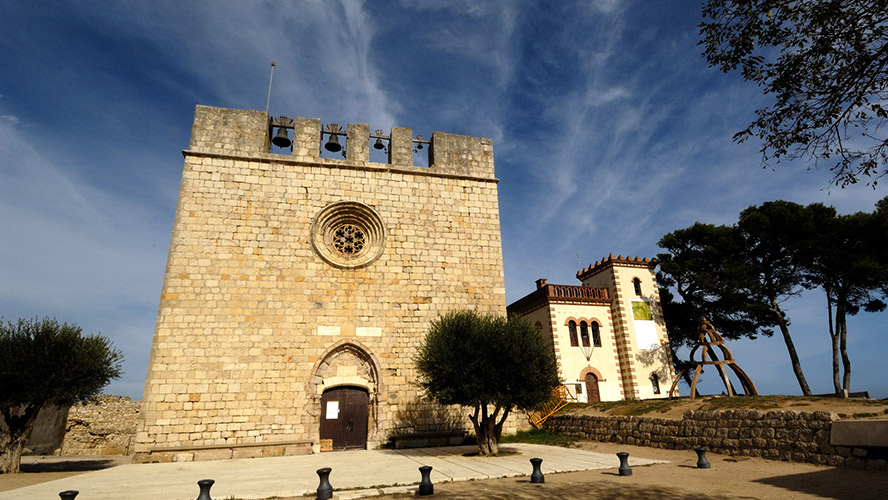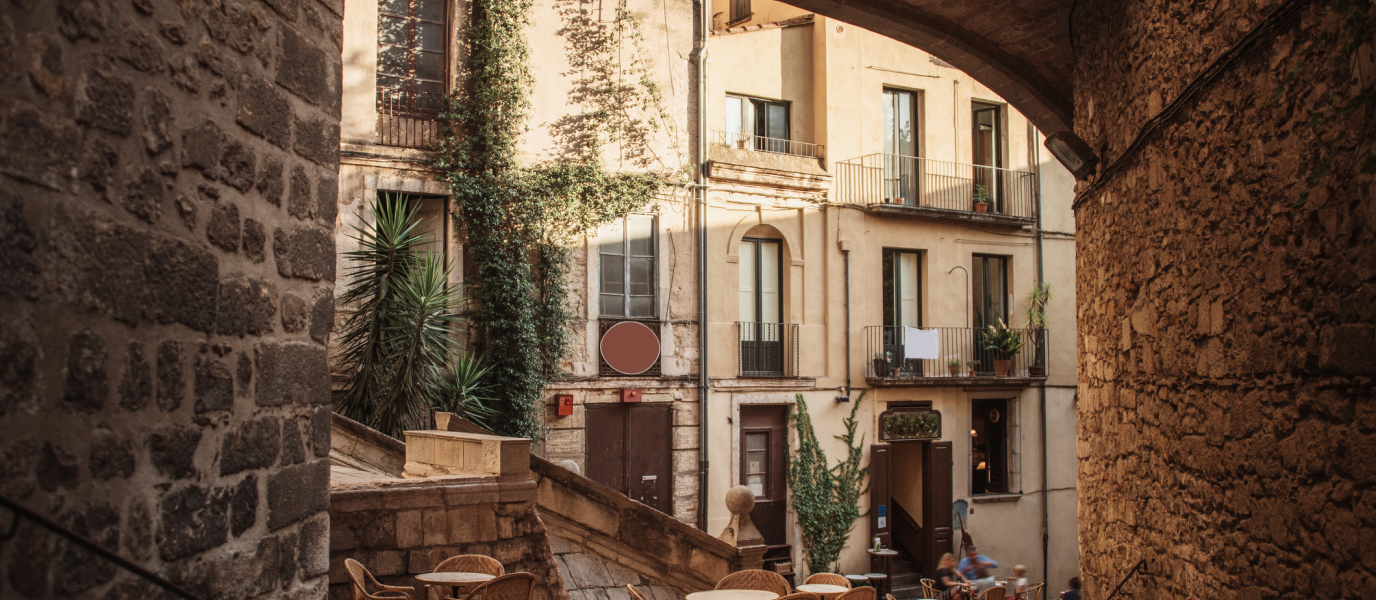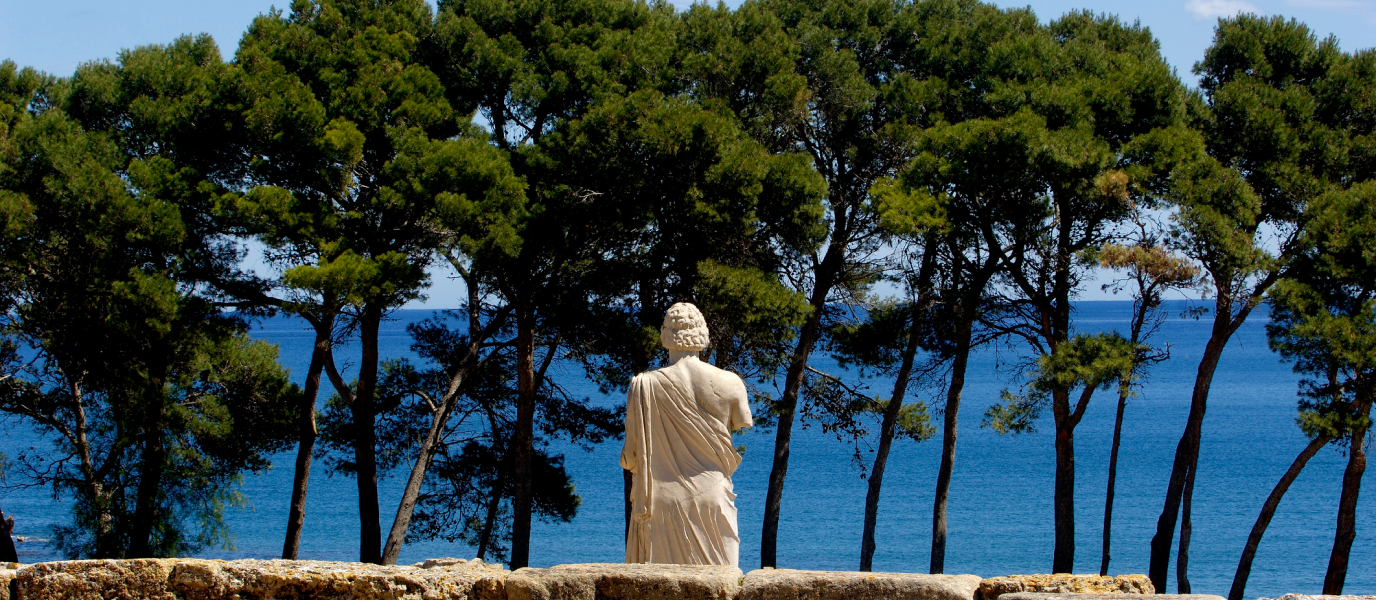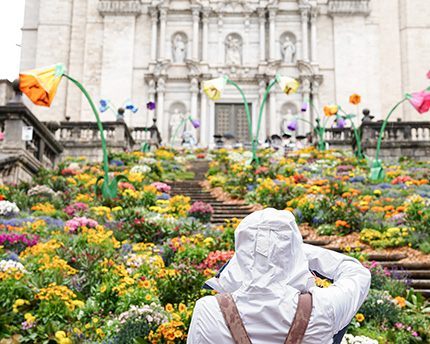Girona is home to some of the most beautiful villages in Spain, which stand as some of the region’s most sacred treasures – idyllic places that appear again and again on Instagram and seem as if they are from faraway lands. In this guide you can discover the most beautiful places and what to see in each of them so you don’t miss a thing.
Pals
This small medieval village holds all the magic of history in its cobbled streets, walls and fortified Gothic- and Renaissance-style homes. The village is small, which means you can easily cover it in a couple of hours, although it is worth taking the morning to enjoy the charms of one of the most beautiful villages in the area.
You can visit landmarks such as Can Pruna, a fortified fifteenth-century home, which houses various exhibitions; Plaça Major and its Gothic archway with medieval tombs carved out of the stone, and Torre de les Hores, a 15-metre-tall tower that is one of the few vestiges of the castle still standing, which protected the village throughout centuries.
Also not to be missed is Sant Pere church, a medieval building that had successive styles added to it with the extension of the chevet and the bell tower but which nevertheless has retained the essence of Pals between its walls.
Cadaqués
It was Salvador Dalí, one of the town’s most distinguished residents, who claimed that Cadaqués is the most beautiful village in the world thanks, in part, to its whitewashed fishermen’s homes with balconies covered in flowers and its cobbled streets.
The starting point to explore the old town is Santa María church, which sits on the top of a hill with incredible views. The most notable part of the church, however, is inside. From there, the best thing to do in Cadaqués is stroll along its narrow streets without missing places such as Carrer des Call, Carrer de Santa María and Carrer de San Antoni, full of colourful bougainvillea.
Another must-see to get a better understanding of the art that envelops the town are the modernist houses lining Plaça des Portitxó, such as Casa Blaua and Casa de Don Octavio Serinyana. Most of them were built by the famous indianos, Catalan emigrants who made their riches in the Americas and returned to build themselves not just ordinary homes but veritable palaces in the latest fashion.
Set aside some time to enjoy the sunset on the seaside promenade and climb one of the lookout points, such as the one on Pujada des Pianc.

Calella de Palafrugell
One of the most popular villages among tourists in Girona, Calella has nevertheless managed to retain its charms with its narrow streets and low, whitewashed houses, which contrast beautifully with the blue of the Mediterranean in the background.
In the town you can visit the Cap Roig botanical garden, one of the most important in the area, which was created by a Russian colonel and an English aristocrat, who brought plant species from all over the world to the village.
However, the most famous part of Calella de Palafrugell are its small, idyllic, rocky coves, which are dotted along the coast, such as the completely unspoilt El Golfet or Cala Foradada, one of the most visited.
A good way to get incredible views of the village is to walk the Cami de Ronda, which connects most of these beaches on an easy walking trail.
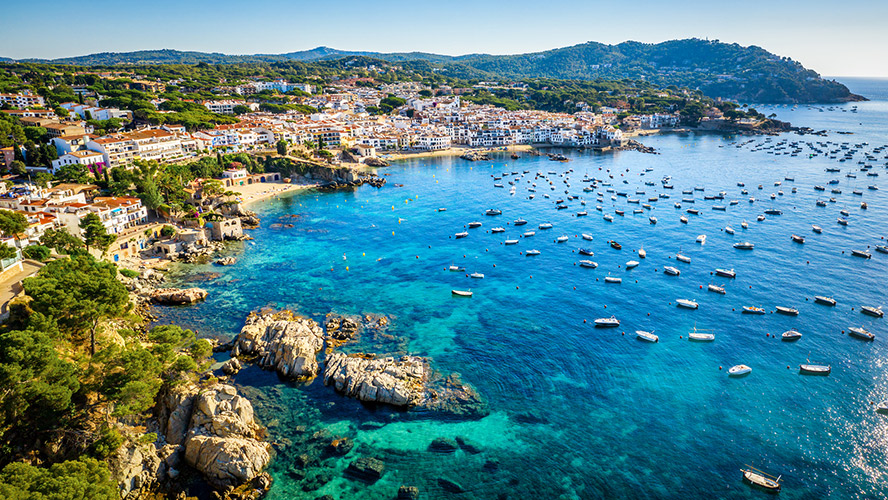
Besalú
One of the best preserved medieval villages in Girona, this is a must-visit for those who wish to immerse themselves in history. The starting point of your visit should be the village’s twelfth-century stone bridge, which is around 150 metres in length and whose tower is the entrance to the walled town.
Once inside, the best thing to do is wander along the narrow streets of the Jewish quarter, one of the best preserved in Spain, whose houses still retain Hebrew inscriptions and openings on their doors for storing the Mezuzah. Inside the Call, as the area is known, you can visit the synagogue and the mikveh, the old baths used by the Jewish community, which were discovered just a few decades ago.
Another of Besalú’s charm are its squares, including Plaça Mayor, Plaça de Sant Pere, with its twelfth-century church, and Plaça de la Llibertat, where you can have a drink at its many bars and restaurants.
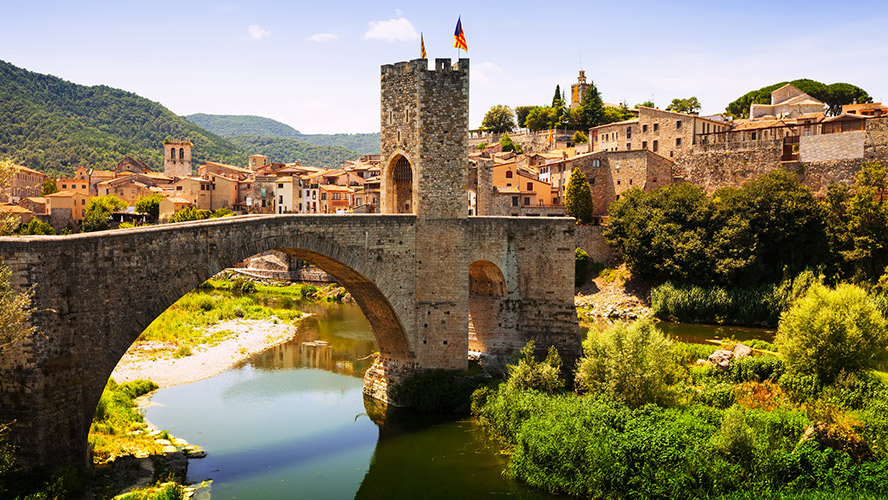
Tossa de Mar
There are two things that are musts when in Tossa de Mar: visiting its twelfth-century castle, which has incredible views, and taking a dip on Platja Gran beach or in any of the coves situated along the fishing town’s coastline.
The best way to get to quieter swimming areas is to follow the Camí de Ronda, which will take you to Cala Pola, one of the most famous.
Inside the walls is Vila Vella, a fortified town full of cobbled alleyways and balconies covered in flowers.
At lunchtime, it’s best to drop by Carrer dels Socors, which is lined with restaurants serving delicious seafood set menus and home to Mare de Deu chapel, a church that, according to legend, was built by a fisherman who survived the shipwreck in which the image of the Virgin Mary was recovered.
Tossa de Mar also boasts the important Villa Romana dels Ametlers ruins, where part of the thermal baths and some mosaics have been preserved.
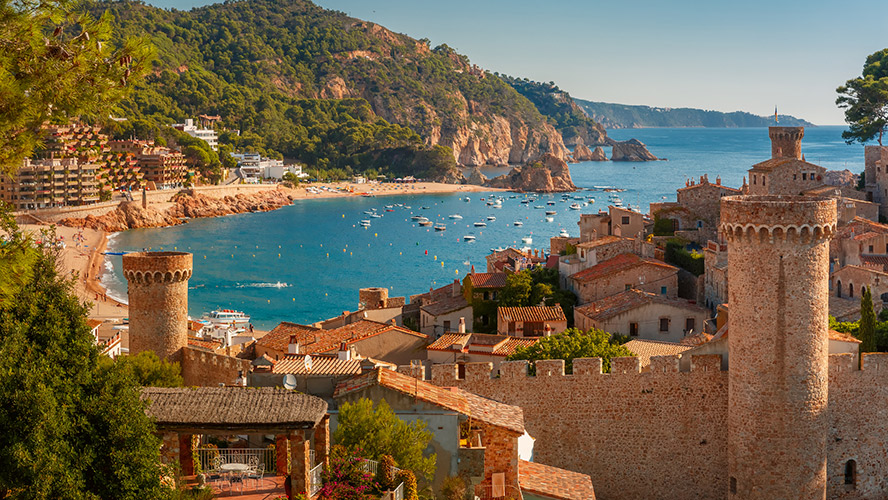
Peratallada
The first striking thing about this village is the rock upon which it sits, which has been carved to shape Peratallada, hence its name which comes from the Catalan words ‘petra’, meaning stone, and ‘tallada’, meaning carved. Sant Esteve church, a Romanesque church with a large rose window and a very unusual bell tower, immediately catches the eye.
Crossing the street, you will come to the Portal de la Virgen, the gateway to the walled town, which has retained the moat to prevent enemy attack. Once inside, it’s time to enjoy streets such as Carrer de la Roca and Carrer Major and squares such as Plaça de les Voltes and Plaça dels Esquiladors, the perfect place to stop and have a drink at one of the bars.
You cannot leave without visiting the Torre de l’Homenatge and its battlements, the best preserved part of the old castle which is built on the rock.
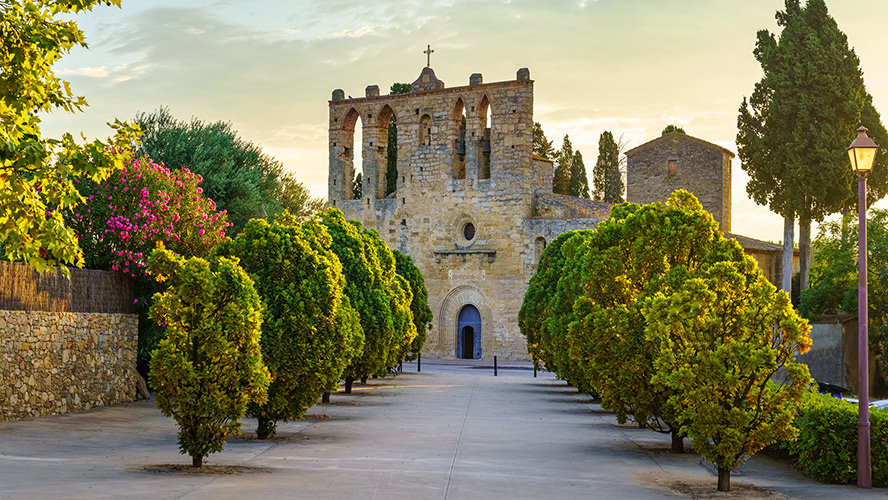
Rupit
Rupit is a border village between the provinces of Barcelona and Girona, situated at an altitude of 845 metres, in the middle of abundant nature, making it a great place to do hiking or cycling routes.
One of its most important attractions is the hanging bridge, which crosses Rupit stream leading to stone houses, some of which are over four centuries old, and the narrow streets opening out onto incredible lookout points.
One of the best views, however, can be seen from the bell tower of Sant Miquel church, from where you can contemplate the whole village and the valley.
Rupit’s most visited spot is not in the centre of the village, however. Nor is it made from stone. It is instead Salt de Sallent, the tallest waterfall in Catalonia, standing at a height of 90 metres.
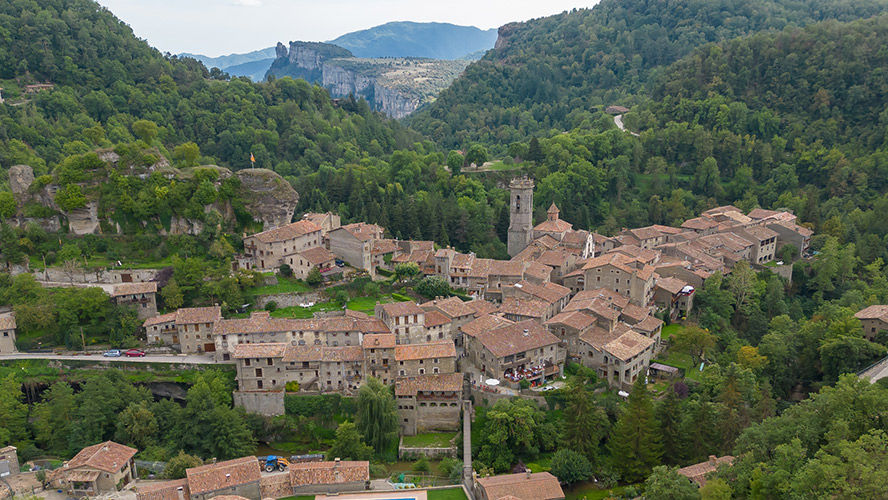
Castellfollit de la Roca
The unique thing about Castellfollit de la Roca, one of the smallest villages in Spain, is its incredible location, perched on basalt cliffs within La Garrotxa Volcanic Zone Natural Park, which is home to over 40 volcanoes.
Barely 1,000 inhabitants live in these houses perched on the rock in what they call the Cinglera de Castellfollit, from where they enjoy incredible views of the valley and the rest of the mountains.
Many of the houses are built from basalt ashlars from nearby quarries, the most notable of which, Torre del Rellotge, or the clock tower, was built in 1925, as legend has it, as a result of the electoral promises of a Catalan member of parliament. The clock has one secret and all you have to do is take a look at the number four to understand the tower’s peculiar nature.
In addition to the church’s bell tower, which you can climb to enjoy views of the village, you can also reach the Mirador de Josep Pla, a lookout point where you can take some photos of the hanging wonder from a different perspective.
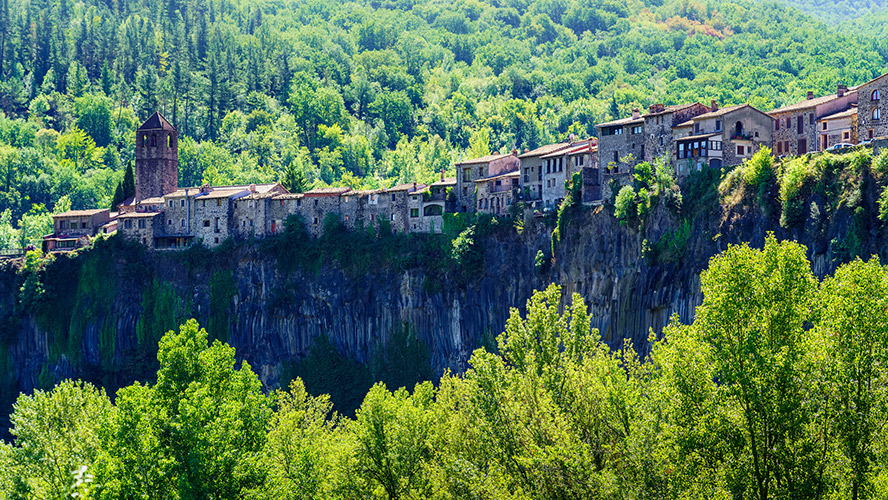
Monells
Monells is the famous town where the film Spanish Affair 2 was shot, so you can imagine what you will find amid the stone streets and squares lined with historical building and porticoes, such as Plaça de Jaume I.
Other places to visit include Carrer dels Arcs, with its slender stone archways that lead to Plaça del Oli, a magical place due to its arcades and creeping vines.
In addition to visiting the church and the wall, the only part remaining of the castle, the best thing to do in Monells is to sit at one of its terraces, found on any stone street corner, and enjoy a leisurely aperitif.
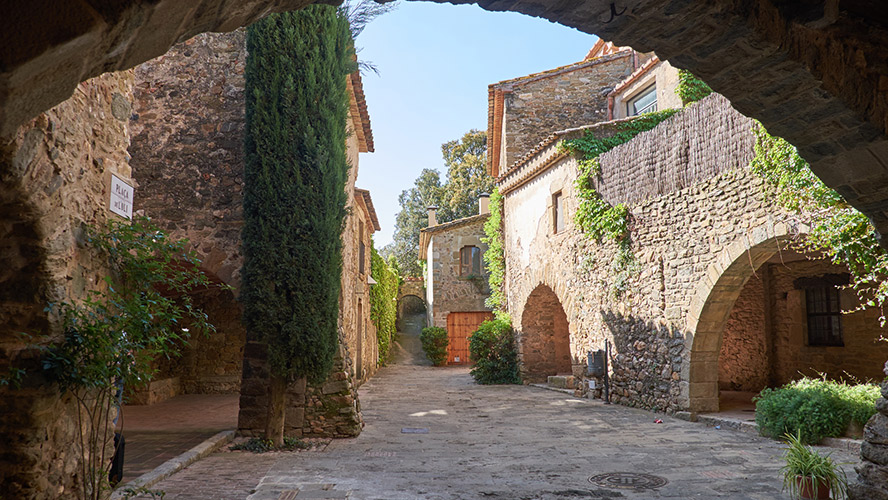
Beget
This small village with just 27 inhabitants is one of the most charming places in the area. Stone houses, the church bell tower that can be seen from the road and two incredible medieval bridges that cross the Llierca river are just some of the attractions in the village that cannot be missed.
The natural surroundings in which Beget is situated offer some very popular hiking routes such as the one up Puig de les Bruixes, which is full of legends typical to the area. Another fun thing to do is make your way to Gorgues de Beget to enjoy its incredible clear water.
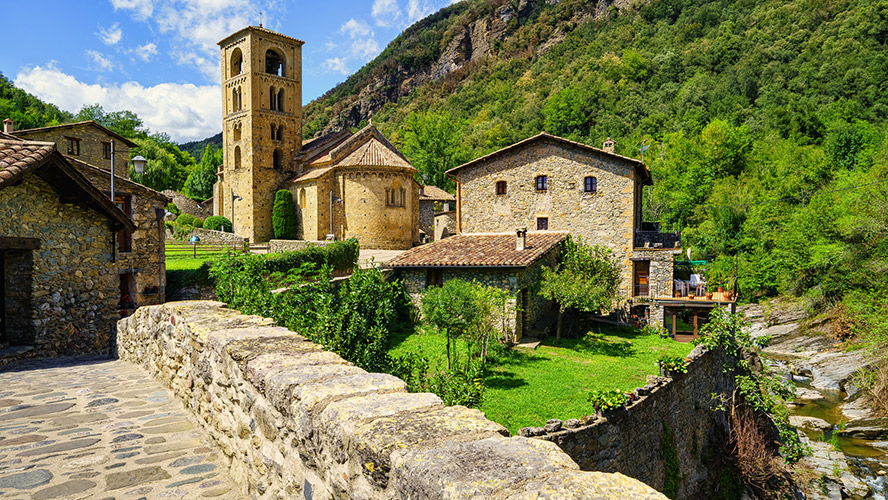
Sant Martí d’Empúries
This medieval village halfway between L’Escala and the Empúries archaeological site is the perfect blend of sea, history and nature.
It is well worth strolling along its medieval streets once you have crossed the city walls to reach Sant Martí church, a building constructed on the ruins of an old temple dedicated to the Greek goddess Artemis. In fact, inside you can see very important Greco-Roman ruins and Early Christian altars.
Next to the church is the Casa Forestal, a modernist building that contrasts with the medieval surroundings, and the terraces of Plaça Mayor, a place that inspired the Spanish artist, Víctor Mora, to create the famous Captain Thunder.
We recommend taking the time to enjoy a drink here, in the shade, before enjoying Sant Martí’s great spectacle: sunset on the golden beach from where you can see the remains of the Greek dock dating from the first century BC.
